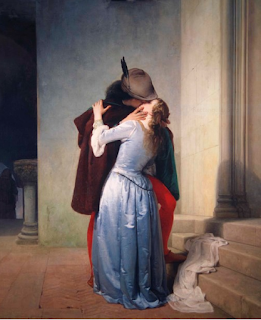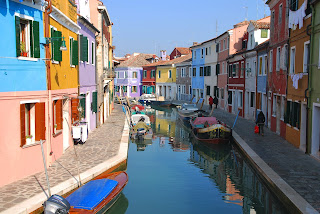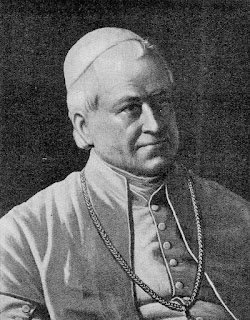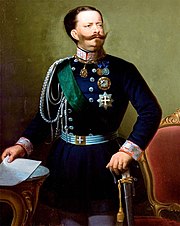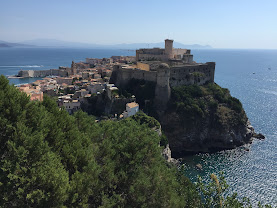NEW - Francesco Hayez - painter
Artist who pushed boundaries of sensuality
The painter Francesco Hayez, regarded as the father of the Milanese Romanticism movement in the mid-19th century and an artist renowned for his depictions of historical events and for his political allegories, was born on this day in 1791 in Venice. His father, a fisherman, was French in origin and married a girl from Murano called Chiara Torcello, although they were a relatively poor family and Francesco was largely brought up by his wife’s sister, who had the good fortune to marry Giovanni Binasco, a wealthy ship-owner who dealt in antiques and collected art. It was Binasco who fostered in Hayez his love of painting and after initially beginning an apprenticeship as an art restorer became a pupil in the studio of the Venetian painter Francesco Maggiotto. He was admitted to the New Academy of Fine Arts in Venice in 1806. Hayez moved to Rome in 1809 after winning a one-year scholarship at the Accademia di San Luca. In the event, he stayed in Rome until 1814, then moved to Naples where he was commissioned by Joachim Murat, the French military commander and statesman who was King of Naples under Napoleonic rule, to paint a major work. Read more…
_________________________________________________________
Luca della Robbia - sculptor
Renaissance ‘genius’ famed for glazed terracotta
Luca della Robbia, whose work saw him spoken of in the same breath as Donatello and Lorenzo Ghiberti among the great sculptors of the Renaissance, died on this day in 1482 in Florence. Della Robbia worked in marble and bronze initially but enjoyed considerable success after inventing a process for making statuary and reliefs in terracotta decorated with a colourful mineral glaze. Thought to be around 82 or 83 years old, he had shared the full details of the process only with his family. On his death, his nephew Andrea della Robbia inherited his workshop and other members of the family, notably his great-nephews Giovanni della Robbia and Girolamo della Robbia, continued to employ his methods with success into the 16th century. Terracotta literally means cooked earth and Della Robbia’s technique involved the application of colourful glazes made using lead, tin and other minerals to the fired clay. Sculpting in terracotta was not new, having been invented in the ancient world, but Della Robbia’s idea to coat the terracotta with a glaze that fused with the clay below gave the surface a brightness and shine and made the sculpture particularly durable. Read more…
________________________________________________________
ENI – oil and gas multinational
Italian energy company emerged after WW2
The Rome-based multinational oil and gas company ENI, one of the world’s largest industrial concerns, was founded on this day in 1953. The company, which operates in 79 countries, is valued at $52.2 billion (€47.6 billion) and employs almost 34,000 people. It is the 11th largest oil company in the world. Its operations include exploration for and production of oil and natural gas, the processing, transportation and refining of crude oil, the transportation of natural gas, the storage and distribution of petroleum products and the production of base chemicals and plastics. A wholly state-owned company until 1995, ENI is still to a large extent in the control of the Italian government, which owns just over 30 per cent of the company as a golden share, which includes preferential voting rights, almost four per cent through the state treasury, and a further 26 per cent through the Italian investment bank, Cassa Depositi e Prestiti. ENI came into being as Italy was rebuilding after the Second World War, which had left its economy in ruins. Enrico Mattei, an industrialist and a Christian Democrat deputy, was assigned the task of winding down the existing state-owned oil company Agip, which was seen as unsustainable. Read more…
_________________________________________________________
Andrea Silenzi - footballer
Forward was the first Italian to play in the English Premier League
The footballer Andrea Silenzi, who made history in 1995 when he became the first Italian to be signed by a Premier League club, was born on this day in 1966 in Rome. A 6ft 3ins centre forward, Silenzi had enjoyed Serie A success with Torino in particular, his form persuading Nottingham Forest to offer £1.8 million - the equivalent of about £3.5 million (€4 million) today - to bring him to England. When Forest manager Frank Clark proudly announced his new man before the 1995-96 season, it was seen as an important moment for the fledgling Premier League, then only three seasons old. The Italian League at the time was the most glamorous in Europe, wealthy enough to hire stars from all around the world, including many British players; it was rare for Italian players to move abroad. Yet Silenzi, a teammate of Diego Maradona during a two-year stay with Napoli who had won a call-up to the Italian national team after his 17 goals for Torino in the 1993-94 season, had agreed to come to England. Forest gave Silenzi a contract worth £360,000 a year, a considerable sum at that time. Read more…
_________________________________________________________
Ernesto Teodoro Moneta – Nobel Prize winner
Supporter of Garibaldi was also an ‘apostle for peace’
Ernesto Teodoro Moneta, who was at times both a soldier and a pacifist, died on this day in 1918. Moneta was only 15 when he was involved in the Five Days of Milan uprising against the Austrians in 1848, but in later life he became a peace activist. He won the Nobel Peace Prize in 1907, but publicly supported Italy’s entry into the First World War in 1915. On the Nobel Prize official website he is described as ‘a militant pacifist’. Moneta was born in 1833 to aristocratic parents in Milan. He fought next to his father to defend his family home during the revolt against the Austrians and then went on to attend the military academy in Ivrea. In 1859 Moneta joined Garibaldi’s Expedition of the Thousand and fought in the Italian army against the Austrians in 1866. He then seemed to become disillusioned with the struggle for Italian unification and cut short what had been a promising military career. For nearly 30 years Moneta was editor of the Milan democratic newspaper, Il Secolo. Through the columns of his newspaper he campaigned vigorously for reforms to the army which would strengthen it and reduce waste and inefficiency. Read more…
___________________________________________________________
Raffaele Lauro – author and politician
Sorrentine's talents include writing, film directing and song
Italian Senator and journalist Raffaele Lauro was born on this day in 1944 in the resort of Sorrento in Campania. A prolific writer, Lauro has also been an important political figure for more than 30 years. He was born in Sorrento and as a young man worked as a receptionist at a number of hotels along the Sorrento peninsula. After finishing school he went to the University of Naples where he was awarded degrees in Political Science, Law and Economics. Lauro then won a scholarship from Italy’s Ministry of Foreign Affairs and studied first at their diplomatic institute and later in Paris. He later studied for a degree in journalism in Rome and became director of a scientific magazine, moving from there to become a commentator on new technology for Il Tempo in Rome and Il Mattino in Naples. He also studied film directing while living in Rome and taught Law of Mass Communications at Rome University. His political career began when he was elected as a Councillor for Sorrento in 1980. He went on to become Deputy Mayor and Councillor for finance, personnel and culture, in which role he opened the Public Library of Sorrento. Read more…








